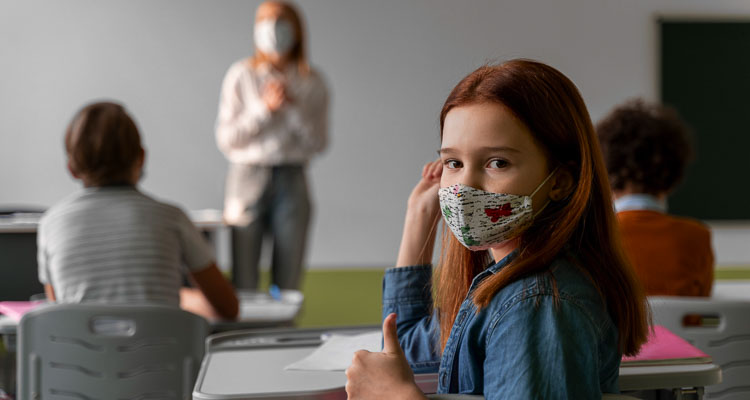
Data suggest mental health concerns remain with some signs of improved health behaviors
OLYMPIA – Results from the 2021 Healthy Youth Survey (HYS), a statewide survey of young people focused on their health behaviors, are now available. Data suggest mental health concerns remain with some signs of improved health behaviors, including a decrease in substance use.
While the full impact of the pandemic is not yet fully understood, the results of the HYS will help in identifying the needs of students now and moving forward. HYS data underscores the importance of a continued focus on efforts in schools, families, and communities to support healthy youth development.
The HYS is distributed to students in 6th through 12th grade every two years, providing representative data from Washington’s middle and high school students. Student participation is voluntary and anonymous.
“Being a teenager these days can be difficult. Not many people are asking how we are really doing and what they can do to help,” said a HYS participant who remains anonymous. “I really appreciate the opportunity to answer questions about myself and how I am feeling, in an anonymous way, knowing my answers can help me and other kids my age be healthier.”
The pandemic has raised concerns regarding depression and suicidal ideation in youth. In 2021, 7 in 10 10th-graders reported feeling nervous, anxious, on edge, or not being able to stop or control worrying.
Among the 10th grade participants:
- 38% reported feeling sad/hopeless in the past 12 months
- 20% reported they seriously considered attempting suicide in the past 12 months
- 16% reported they made a suicide plan in the past 12 months
- 8% reported they attempted suicide in the past 12 months
The data show some student populations are more heavily affected than others, including students who identify as female, students who identify as LGBTQ+, students with disabilities, and students from lower income households.
“Reports of our children suffering with mental health issues are a worrisome public health concern,” said Umair A. Shah, MD, MPH, Secretary of Health. “Mental health is a part of our children’s overall health and well-being. It is imperative that we all continue to work together to fully support the whole child by providing information and access to behavioral health resources to youth and the trusted adults in their lives.”
While continuing to live through a pandemic proves challenging, many Washington students remain hopeful. About 7 in 10 10th-graders reported feelings of moderate to high hope – meaning they have set meaningful goals or pathways and are motivated to achieve them.
“There is no doubt that the past two years have been challenging for our young people,” said Superintendent of Public Instruction Chris Reykdal. “Despite the uncertainty of the evolving pandemic, families, educators, and schools have worked hard to support our students, maintain hope, and build resiliency.”
Compared to 2018, more students reported feeling that using alcohol, marijuana, and tobacco was risky for their health. Additionally, fewer youth reported using substances, including alcohol, marijuana, and tobacco.
Among the 10th grade participants:
- 8% reported using alcohol within the last 30 days, down from 19% in 2018
- 7% reported using marijuana within the last 30 days, down from 18% in 2018
- 2% reported smoking cigarettes in the last 30 days, down from 5% in 2018
- 8% reported vaping in the last 30 days, down from 21% in 2018
“It’s encouraging to see these low rates of substance use reported this year,” said Health Care Authority Director Sue Birch. “We know preventing youth from using substances, especially at early ages, can support healthier brain development and contribute to school success and overall improved adolescent health outcomes. This is positive news and we do hope to see lower rates continue in future surveys; however, we are aware there was a very different environment the last two years due to the pandemic.”
Healthy Youth Survey officials believe “we can all make a difference in the lives of our Washington youth by teaching and reinforcing hope. Adults have the power to help young people be resilient and support positive ways of coping. Parents and trusted, caring adults have the greatest influence on young people’s decisions about using alcohol and other drugs.’’
Federal, state, and local resources are available that can help young people navigate behavioral health concerns:
- For proven tips on how to talk, monitor, and bond with teens: StartTalkingNow.org
- For LGBTQ+ youth: The Trevor Project
- Help for teens by teens: Teen Link
- Suicide Prevention Lifeline: 800-273-8255
- Crisis Text Line provides confidential text access from anywhere in the U.S. to a trained crisis counselor. Text HOME to 741741 (24/7/365)
- More resources on the Department of Health’s website
About the Healthy Youth Survey
The Health Care Authority, the Department of Health, the Office of Superintendent of Public Instruction, and the Liquor and Cannabis Board collaborate on the biennial HYS. The last survey was conducted in 2018, and 2021 marks the 17th survey. For more information about the survey, including other results and fact sheets, visit AskHYS.net













I’m not surprised; when our first “at home school” change came, I wondered if the additional home time would benefit kids wellbeing.
We should be happy that Inslee’s COVID rules gave us this data point. Now we should look to go farther and improve our kids’ wellbeing.